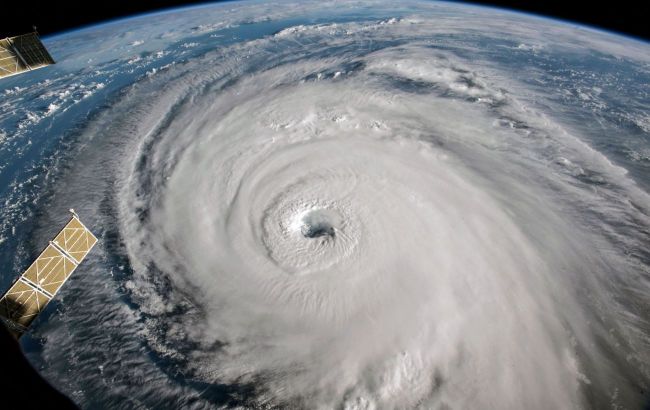Meteorologists identify longest-lasting tropical cyclone in history
 Illustrative photo: Cyclone from space (Getty Images)
Illustrative photo: Cyclone from space (Getty Images)
The World Meteorological Organization declared the tropical cyclone Freddythe longest-lasting in history.
Here is what you need to know about Freddy and cyclones in general.
What scientists say about Freddy
According to the World Meteorological Organization (WMO), the tropical cyclone Freddy affected some regions of the Earth in 2023, lasting a total of 36 days.
In February and March of last year, Freddy crossed the Indian Ocean, starting from the coast of Northwestern Australia, and reached southern Africa.
This caused significant human and economic losses in the most affected countries.
 The path and intensity of Freddy (map: uk.wikipedia.org)
The path and intensity of Freddy (map: uk.wikipedia.org)
The WMO International Experts Committee, working under the auspices of the World Weather and Climate Extremes Archives, conducted a detailed analysis of this cyclone and recognized its duration as a tropical storm as a new world record (the previous record holder - the cyclone John - raged in the northern part of the Pacific Ocean for about 30 days in 1994).
The meteorologists' analysis shows that in terms of distance, Freddy traveled 12,785 km (plus or minus 10 km), which is about 30% of the Earth's circumference.

Freddy cyclone at its peak intensity on February 19, 2023 (photo: uk.wikipedia.org)
"Freddy was a remarkable tropical cyclone, not only for its longevity but also for its ability to survive multiple land interactions, which unfortunately had significant consequences for southeast African populations," says Chris Velden, committee member and tropical cyclone/satellite expert from the University of Wisconsin, USA.
Rapporteur of Climate and Weather Extremes for WMO Randall Cerveny noted that such a global investigation underscores the organization's meticulous attention to certifying all meteorological observations (its archive contains data on the highest and lowest temperatures in the world, precipitation amounts, the strongest hail, the longest dry period, maximum wind gusts, the longest lightning strike, weather-related mortality, and more).
"The extremes presented for adjudication for the WMO Weather and Climate Extremes Archive are ‘snapshots’ of our current climate," clarified the expert, adding that greater extremes may well be recorded in the future.
What you need to know about cyclones
Cyclones are areas of low pressure with a diameter of about 100 km to 3,000 km, with a minimum value at the center and closed isobars (lines on the map that connect places with the same atmospheric pressure).
They are atmospheric vortices with air mass circulation:
- counterclockwise - in the northern hemisphere
- clockwise - in the southern hemisphere

Cyclone (Photo: meteo.gov.ua)
Cyclones constantly and naturally form against the backdrop of Earth's rotation (thanks to the so-called Coriolis force - one of the inertial forces). At the center of such a vast vortex, air rises and, cooling down, spreads out at altitude.
Typical cyclone weather:
- rain, thunderstorms, temperature drops, and wind intensification - in summer
- heavy cloud cover, snowfalls, blizzards, and some warming - in winter
Cyclones most often move from west to east, and their movement is caused by sharp changes in atmospheric pressure, wind, temperature, and humidity.
Previously, we wrote that tropical rains might shift north and which countries will face catastrophic consequences.
Sources: American Meteorological Society, World Meteorological Organization, Ukrainian Hydrometeorological Center.

